“Growing” is something that requires a lot of commitment. There are many factors that come into play when growing is in mind. Building muscle is what first comes to mind when wanting to grow, but one must also remember to lose fat in order to make the muscle lean, to eat clean in order to nurture the muscles and maintain a healthy body, to consume supplementation properly, and to rest in order to allow the muscles to recover and rebuild torn muscle.
Exercising, Nutrition, Supplementation, and Resting. These are the four components of growth. These are not to be taken lightly and are meant to be committed to. All four are what muscle growth feeds off of. A consistent regimen of all four will guarantee success in growing muscle and having a body that will have people admiring.
Before diving into what you need to do in order to grow, you must first know what body type you are— Endomorphic, Mesomorphic, or Ectomorphic. Your body type will influence how your body responds to dieting and training.
–Endomorph: An Endomorph can be identified as having a soft body, flabby, underdeveloped muscles, round shaped, difficulty with losing weight, average height, being able to gain muscle easily, slow metabolism, generally short, and naturally strong. An Endomorph’s training and nutrition should be centered around fat loss and strength training. Strength training will ensure a better muscle-to-fat ratio in the body and therefore improve the body’s metabolism which will help with fat loss. High intensity with moderate weights is optimal to help with melting the fat off of the muscle.
–Mesomorph: A Mesomorph can be identified as having an athletic and hard body, well defined muscles, upright posture, being strong, being able to gain muscle easily, being able to gain and lose fat easily, and all-around naturally fit body. The Mesomorph is the ideal body type for bodybuilding because of it’s ease in being able to lose/gain fat and gain muscle. The training of a Mesomorph should be with high intensity and moderate to heavy weight, this is optimal for the body type’s response to muscle growth. Sticking to a healthy diet will keep the body lean and muscular.
–Ectomorph: An Ectomorph can be identified as being fragile, thin, flat-chested, delicate, tall, lightly muscled, stoop-shouldered, and having trouble gaining weight and growing muscle. Ectomorphs should focus on gaining weight in the form of lean muscle. Bulking should be something an Ectomorph should try because the body will respond to the high caloric intake easily due to the high metabolism and won’t get a “swollen” look due to the body type. Weight-training should not be done too frequent initially due to the fragility of the body, instead, it should be done with moderate to heavy weight but with a slower pace. Allowing the muscles to rest and work at slow pace will have them gradually working up to a more solid build and therefore allow for higher intensity training and more gains.
Bodybuilders across the world religiously abide by their macronutrients— a type of food required in large amounts in the human body (Fats, Proteins, and Carbohydrates.) Macronutrients, or macros for short, are measures of how much Protein, Fats, and Carbohydrates a person must eat per day in order to fulfill their goals. An example would be— Protein: 228g, Carbs: 200g, Fats: 51g per day. Calories are not typically counted as long as the calories being consumed are good calories, meaning clean foods and none of that junk-food garbage. Calculating you macros can be done on multiple websites using only your weight and body-fat percentage. Once your macros are determined, set up a meal plan for a whole week or more that establishes how many macros per meal you will consume.
An example of a meal plan would be:
Meal One- 5 Egg Whites, 1 Cup of Oatmeal, and 1 Protein Shake Serving
Meal Two- 12 Ounces of Chicken, 2 Cups of Brown Rice
Meal Three- 2 Servings of a Protein Shake
Meal Four- 14 Ounces of Chicken, 12 Ounces of Sweet Potato
Meal Five 6 Ounces of Beef Filet, 2 Cups of Broccoli
Each meal will have a set number of macros in it. Your macros are what all of your meals will be based off of. The amount of meals you eat per day should range from 3-5 to ensure a healthy metabolism rate while supplying your body with its macros. Consistency will ensure that your progress is gradual. You can kill yourself in the gym all day long, but if you don’t have the nutrition to back it up, you’ll never see gains. Measuring everything you eat will take some time out of your day, but planning ahead will ensure you don’t waste your time measuring things. Meal-prep is what many fitness enthusiasts do so that they can eat without having to cook for a few days in a row. Meal-prep involves cooking each meal a few days in advance, typically in bulk, to save time. An example would be cooking five pounds of chicken and boiling five potatoes to serve as meal three for Monday through Friday, and cooking 50 ounces of Tilapia and boiling eight cups of brown rice to serve as meal four for Monday through Friday.
Meats and eggs serve as Slow-Digesting Proteins that are best consumed in the morning and before bed. The Slow-Digesting proteins “trickle” down into your bloodstream slowly and feed your muscles over night and during the day.
Fast-Digesting Proteins are more easily consumed through Protein powders, these are commonly taken post-workout, but can be taken pre-workout in order to supply the muscles with Protein all throughout the workout. Nutrition should be amongst the top of your priorities if growing is what’s in mind, it’s what will fuel your muscles to grow while maintaining a low body-fat. Fiber is also good to include into your diet because of it’s importance in cleaning out your digestive system. Also be sure to drink at least a gallon of water a day because keep in mind, your body is mostly comprised of water and your muscles are mostly comprised of water and protein. Drinking a lot of water everyday will give your muscles a fuller look and will ensure that you are quenched for physical activity.
Exercising is what the majority of people looking to grow love to do. It’s the perfect scapegoat for guys to show off their muscles while getting into shape as well. Exercising, with resistance/weights, is what will tear muscle fibers and force them to grow as they are being re-built to support the work that’s being put into them more easily. This process is called Hypertrophy— the enlargement of an organ or tissue from the increase in size of its cells. The increase in size of cells comes from the re-building of the torn muscles. The intensity of how hard you work the muscles should be determined/gauged by your body type as mentioned previously.
Before hitting the gym all Willy-Nilly, a good place to start in your quest for big muscles is knowing the muscles themselves. The muscles you are going to be working are major muscle groups because they are the most prominently visible under the skin when developed. The ones that you will emphasize on are, from the top of the body down—Traps (Trapezius), Shoulders (Deltoids), Back (Latissimus Dorsi), Chest (Pectoralis Major), Abs (Abdominals), Biceps (Biceps Brachii), Triceps (Triceps Brachii), Quads (Quadriceps Femoris), Hamstrings, Calves (Gastrocnemius/Soleus.)
The order in which you work your muscles is entirely up to you. Some people do all upper body one day, and all lower body another day so as to not have to go to the gym 4-5 days a week. Others do the legendary “Bro-Split” which is: Monday- Chest, Tuesday- Back, Wednesday-Legs, Thursday-Shoulders, and Friday- Arms. This routine is good, but only training one muscle group per workout session can be a waste of time and can be overkill if the muscle group being trained is emphasized too long. The optimal routine done by many bodybuilders is push days, pull days, then shoulders and legs on other days. Since the Back requires for the Bicep’s assistance in 99% of its exercises, they are paired. And since the Chest requires the Triceps for 99% of its exercises, they are paired as well. When I say paired, I mean that they are both trained in the same session in order to kill two birds with one stone.. So an example would be— 3×12 Lat Pulldowns, 3×12 Seated Rows, 4×12 Pull-Ups. 5×8 Deadlifts, 3×15 Bicep Curls, and 3×12 Concentration Curls. Since the Shoulder has three heads (Anterior, Medial, and Posterior), it is given its own day; also because it is an essential muscle group when training the Chest and Back. Legs have three major muscle groups— Quads, Hamstrings, and Calves. Since the Quads and Hamstrings are such large hunks of muscle, they are trained together in the same day. Despite Calves being in the legs, they should be trained 3-4 times a week, including ‘Leg Day’, since they are a smaller group and can’t cause damage to the Central Nervous System when trained with high intensity because they are distant from the Central Nervous System and are a muscle that is used on a daily basis that was meant to withstand great use. This split allows for you to go to the gym four days of the week (for weight training) and three rest days per week (if desired). Cardio is a must when looking to grow because cardio is what will burn the excess calories from your body, melt the fat right off of your muscles, and keep your Cardiovascular System strong so that you don’t get winded quickly in the gym.
A good beginning routine for muscle growth would be:
Monday: Chest and Triceps
Incline Bench Press- 1×20 Warm-up, 3×12 Working Sets, 1 Drop-Set
Decline Bench Press- 3×12 Working Sets, 1 Drop-Set
Close Grip Flat Bench Press- 4×12 Working Sets, 1 Drop-Set
Dumbbell Chest Flys- 3×12 Working Sets, 1 Drop-Set
Parallel Bar Dips- 3×12 Working Sets
Rope Tricep Pushdowns- 3×12 Working Sets
Dumbbell Overhead Tricep Extensions- 3×12 Working Sets, 1 Drop-Set
Tuesday:Back and Biceps
Lat Pulldowns- 1×20 Warm-up, 3×12 Working Sets, 1 Drop-Set
Underhand Grip Seated Pulldown- 3×12 Working Sets, 1 Drop-Set
Seated Row- 3×12 Working Sets, 1 Drop-Set
Hyperextensions/Deadlifts- 3×12 Working Sets, 1 Drop-Set
Straight-Bar Bicep Curls- 3×12 Working Sets, 1 Drop-Set
Hammer Curls- 3×12 Working Sets, 1 Drop-Set
Wednesday: Rest
Thursday: Shoulders
Seated Military Press- 1×20 Warm-up, 3×12 Working Sets, 1 Drop-Set
Behind-the-Head Military Press- 3×12 Working Sets, 1 Drop-Set
Dumbbell Lateral Raises- 3×12 Working Sets, 1 Drop-Set
Front Barbell Raises- 3×12 Working Sets, 1 Drop-Set
Rear-Delt Flys- 3×12 Working Sets, 1 Drop-Set
Face-Pulls- 3×12 Working Sets, 1 Drop-Set
Friday: Legs
Lunges- 1×20 Warm-up, 3×12 Working Sets
Squats- 3×15 Working Sets, 1 Drop-Set
Hack Squats- 3×15 Working Sets, 1 Drop-Set
Seated Leg Press- 3×15 Working Sets, 1 Drop-Set
Seated Leg Extensions- 3×15 Working Sets, 1 Drop-Set
Seated Leg Curls- 3×15 Working Sets, 1 Drop-Set
Standing Calf Raises- 3×20 Working Sets, 1 Drop-Set
This routine is a good start for your quest in growing muscle. But don’t abide by this routine forever, changing up your workouts every few weeks is the best thing to do because over time, your muscles will get used to what you’ve been doing, this is known as “Muscle Memory.” Changing up your routine will invoke “Muscle Confusion.” Muscle Confusion is what you must do in order to keep challenging your muscles to keep up with what you’re doing and forcing them to grow for that reason. The number of sets and reps given above are not something you should follow. I have found it best to not let numbers limit or gauge how much you have to do in the gym, listening to your muscle’s ability is what’s best. Let’s say you want to do 12 reps on the Bench Press, but you find yourself only being able to do 7 and you feel like you absolutely have to do those 12, so you try to force out a few more reps and oh! You pop your Shoulder out of place. Listening to how much your body is capable of doing is the most effective way to train. Now, even though the weight you were using may have been too heavy, that heavy weight should have been done with a goal of low reps since heavy weight should be used for strength training.
Another scenario may be that you have to do 12 reps, but you are capable of cranking out 10 more and you still stop at the 12 mark, limiting how much you can do will get you nowhere in the world of bodybuilding because stopping short of getting the muscles tired gets nothing accomplished. Same thing goes for the number of sets you do, counting how many you have to do will prove to be nothing but a burden. This routine is just a framework for you to base your routine off of, temporarily of course. The warm-up should be done at the beginning of your workout to get the joints and muscles ready for what’s to come. The drop-sets are done with each exercise so as to squeeze out those last bits of energy in the targeted muscle group. Doing drop-sets will cause your required muscles for the exercise to “recruit” reserved fibers so as to hit those stubborn muscle fibers that weren’t seeming to cope with what you’re doing. The focus of doing a drop-set is essentially to shock the muscle by adding further stress on it past its limit. This is what induces Hypertrophy.
There are many varieties of supplements out there that you can consume that will help you in your quest of growing, but keep in mind that you absolutely cannot depend on supplements as your go-to to grow, you will grow because of the work you put into your body. Now, there are many ways to consume a supplement— in the morning, after breakfast, pre-workout, during workout, post-workout, before bed, and anywhere in between. Supplements come in three forms— pills/capsules, powders, and liquids. They all come with benefits in one way or another— recovery, endurance, fat-loss, testosterone boosters, muscle builders, weight-gainers, and anywhere in between. The sole purpose of taking supplements is to assist you in building muscle or whatever goal it is you have. Supplements can be expensive and are quite frankly not vital in your journey, they just help speed up your process. Think of them as a sports-car vs. a family car, the sports-car may help you get to your destination faster and may cost more, but it’s not necessary to have. Multi-Vitamins are a good choice if you feel like you aren’t consuming your necessary daily intake of vitamins through your foods. Taking Multi-Vitamins has many benefits because many of the ingredients in Multi-Vitamins are natural Fat-Burners and that is a good reason for not having to buy expensive artificial Fat-Burners. So what supplements should you take if you choose to take supplements?
There are a few “core” supplements bodybuilders across the world take— Fat-Burners, Fish Oil, Protein, Creatine, BCAA’s, Glutamine, Weight Gainers, and Pre-Workouts. The starters you should take into consideration are Creatine, Pre-Workout, and Protein. These three will cover all of your supplement needs throughout the day.
Creatine is a supplement that assists in performance. It is naturally found in your body, but consuming more amounts of it, will help produce energy for high intensity activities and will help recover from high intensity activities as well. Consuming 3-5g daily will bring long-term effects, meaning it can be taken in the morning and will kick in by the time you’re in a workout. The most popular type of Creatine is Creatine Monohydrate because it is the cheapest and just as effective, if not more than other types of Creatine. This supplement is not recommended for teenagers since it has similar effects as testosterone boosters and teenagers have plenty of testosterone in their bodies. Creatine is recommended for adults and/or advanced lifters who are looking for increased strength and endurance. Since it has long-term effects, you won’t feel it working immediately, this supplements takes about three weeks to officially kick in in your system. This is worth trying, if needed.
Pre-Workout is whole category or genre. The main ingredient found in pre-workouts are Caffeine, Creatine, Beta-Alanine, Glutamine, and Arginine. Caffeine is paired with sugar in pre-workout supplements to serve as fillers and to also give you an immediate pick-me-up. Creatine is put in because of the previous explanation, energy and endurance. Arginine, Beta-Alanine, and Glutamine are Amino-Acids that are already found in the body that can be further consumed for more advanced effects. Glutamine can be found in most Proteins. Beta-Alanine is a controversial ingredient found in pre-workout supplements because it has been known to give people a certain “tingle” after taking it. But it is actually a good ingredient to find in your choice of pre-workouts since it raises muscle Carnosine levels (an Amino Acid that naturally concentrates in muscles when they are working) and increases the amount of work you can perform at high intensities. Arginine is a good supplement to find as well because it supports blood and oxygen flow to and from muscle tissues, which translates to greater muscle pumps. The pre-workout you shop for should include the above ingredients because they will all work in unison to make your workout the best workout every time.
Consuming a pre-workout very frequently will lose its effects overtime and will force you to want to consume more of them in order to feel the same effects, but consuming large amounts of a pre-workout will cause severe damage to your liver because of the forced ingredients into the system. It can be thought of as alcohol causing Liver damage when consumed in large amounts. It is controversial whether or not they will cause Liver damage since most of the ingredients are naturally found in your body, but to be on the safe-side, avoid large amounts. Plus, you’ll save money if you cycle off of Pre-Workouts every now and then and have to take only the suggested serving the entire time.
Protein is the “Holy-Grail” of supplements for a bodybuilder. They religiously love their Protein shakes because of their proven benefits— muscle gains. Protein is used for the production of muscles and is naturally found in the body. Without a good amount of Protein in our bodies, our bodies won’t be able to form structures such as cells, tissues, organs, and muscles. Without consuming Protein from another source, our muscles wouldn’t be able to heal up as quickly and could therefore lead to overtraining your muscle which could lead to injury. Taking a fast-digesting Protein shake, or food, after a workout is optimal because it will immediately begin to heal the torn muscle-fibers. Taking Protein in the form of a shake after a workout is the best choice because the body doesn’t have to digest and break-down a solid and will instead immediately rush the Protein into your muscles. Some say that taking a Protein shake within thirty minutes of finishing a workout is the greatest “window of opportunity” to nurture the muscles, but that’s not the case. As long as you feed your muscles a constant supply of Protein throughout the rest of the day after you workout, your muscles will be sufficiently nurtured and will heal without a problem. The amount of Protein you consume per day should be one gram per pound of bodyweight, but don’t let all of it come from your shakes. Instead, let a large quantity of your Protein come from your meals so as to not overload your body with Protein all at once after you workout. Consuming more than one gram per pound of bodyweight will help speed your healing process. You should max out at 1.5g of Protein per pound of bodyweight so you don’t overdo it. Professional bodybuilders typically max out from 2g-2.5g, and even that’s a stretch.
There are different kinds of Protein shakes you can buy— Whey, Soy, Casein, Egg, Beef, Plant, and blends of all different variations. Whey Protein is by far the most consumed of the bunch because of its low cost and its greatest proven benefits. Whey Protein contains all of the essential and nonessential Amino Acids and has the highest BCAA (Branch Chained Amino Acid) content found in nature. Whey Protein is the best Protein for the promotion of growth, next in line for promotion of growth are Egg, Milk, Casein, Beef, Soy, and Bean. Each variety of Protein has its own proven benefit, but for growth it would be Whey. Taking a fast-digesting Protein after working out is best for immediately fueling your torn muscles, a slow-digesting Protein is best taken before long-term rest for a greater extended release of Protein into your system
Rest typically translates into sleep or rest-days. Sleep helps makes you stronger in that it allows for the muscles that have broken down to heal and recover without having to do any work as if you’d be awake. It is during sleep that your Growth Hormones are at their highest. Intense training challenges the Cardiovascular System to have to compensate for the work you want to have be completed. The body must rest in order for it to regenerate and grow stronger. Without proper recovery time, you will not only reach a performance plateau, but will also run the risk of injury from not allowing proper muscle recovery. Getting in your minimum of eight hours of sleep is absolutely essential to growing muscle and taking a few rest days every week will ensure you aren’t overworking your body. Rest combined with a slow-digesting Protein will be the “dynamic-duo” for healing your muscles. Taking a rest-day is always a good thing to do so you don’t have your muscles working non-stop.
Conclusion
Nutrition, Exercise, Supplementation, and Rest are all the crucial components when looking to grow. Doing all of them on a consistent basis will guarantee you a shot at success in muscle growth— alongside with persistence, determination, and perseverance. Putting in hard work in the gym along with eating right are at the top of your priority list alongside with rest. Supplements on the other hand, aren’t vital. Choose a workout plan that fits your training style and make a meal plan that will fit your macros while not draining your wallet. If a supplement costs too much money and will not necessarily give you your money’s worth, leave it alone. Some supplements may give a placebo effect so don’t waste your money. Be sure to rest and drink plenty of water.
Questions, comments, concerns?
-Miguel Sandoval
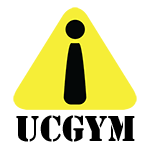

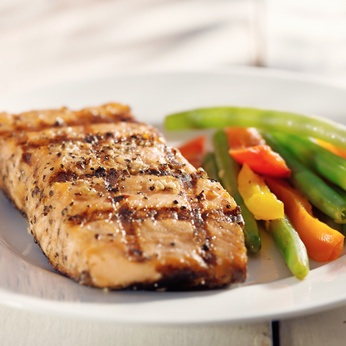





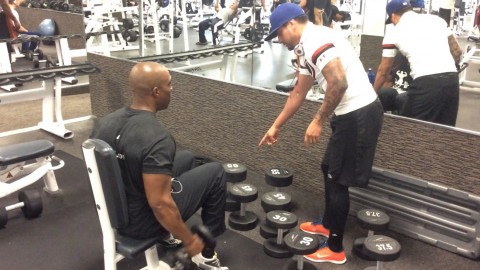

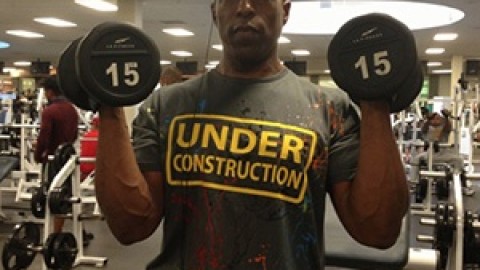

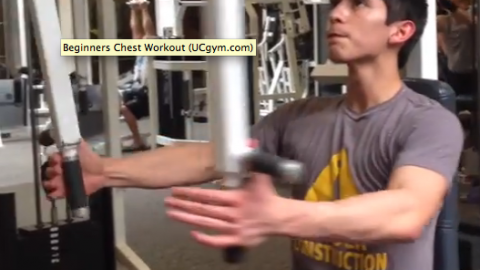

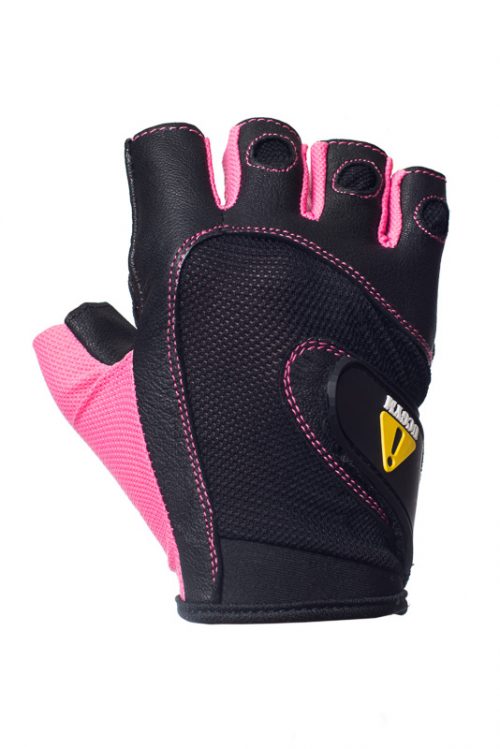
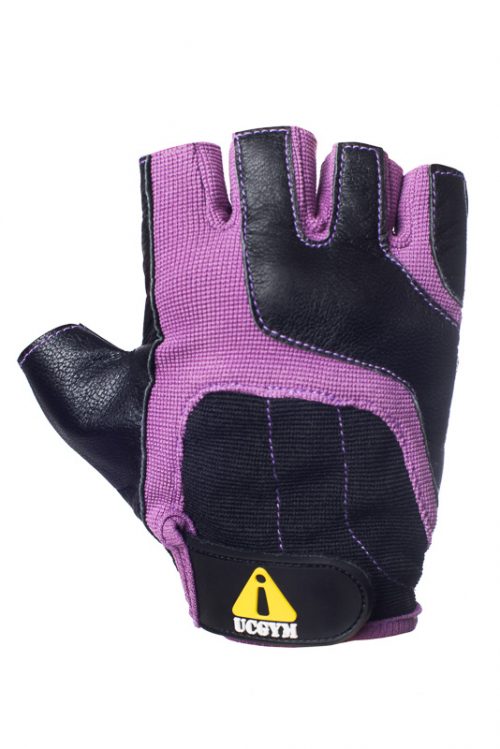
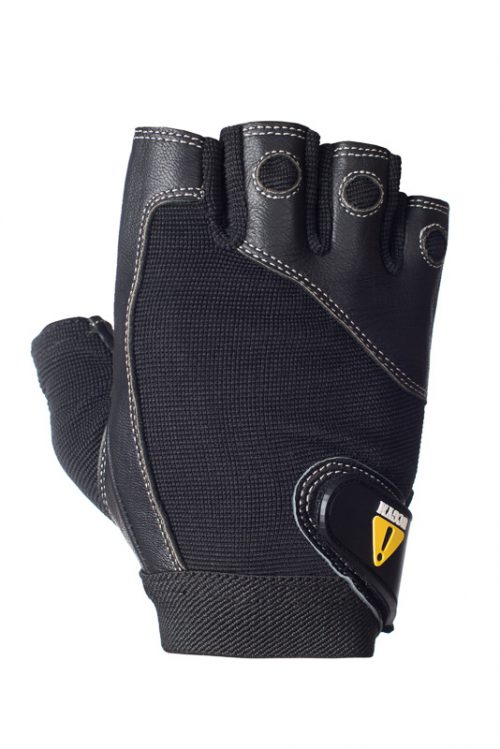

Home run :good:
It takes time to grow If you do not take time out to read this you will not take time out to hit it hard to grow Commitment starts. Here
Thank you for taking your time to write this it is great
Very helpful :good:
Thank you
Phenomenal editing by the way 🙂
So question. If Cardio is a must in order to burn off all the excess calories, should cardio be done at the end of the workout, so to “burn off all the remaining calories from your workout? I was just wondering because I usually hear everyone say do cardio before your workout.
Me. I. Do cardio last after my workout. Yes you are correct to burn the remaining calories
Hey it works for m